Related Research Articles

Interplanetary spaceflight or interplanetary travel is the crewed or uncrewed travel between stars and planets, usually within a single planetary system. In practice, spaceflights of this type are confined to travel between the planets of the Solar System. Uncrewed space probes have flown to all the observed planets in the Solar System as well as to dwarf planets Pluto and Ceres, and several asteroids. Orbiters and landers return more information than fly-by missions. Crewed flights have landed on the Moon and have been planned, from time to time, for Mars, Venus and Mercury. While many scientists appreciate the knowledge value that uncrewed flights provide, the value of crewed missions is more controversial. Science fiction writers propose a number of benefits, including the mining of asteroids, access to solar power, and room for colonization in the event of an Earth catastrophe.

Space exploration is the use of astronomy and space technology to explore outer space. While the exploration of space is currently carried out mainly by astronomers with telescopes, its physical exploration is conducted both by uncrewed robotic space probes and human spaceflight. Space exploration, like its classical form astronomy, is one of the main sources for space science.
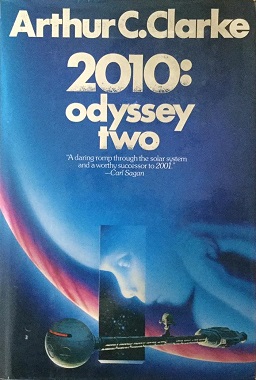
2010: Odyssey Two is a 1982 science fiction novel by British writer Arthur C. Clarke. It is the sequel to his 1968 novel 2001: A Space Odyssey, though Clarke changed some elements of the story to align with the film version of 2001.

A spacecraft is a vehicle that is designed to fly in outer space and operate there. Spacecraft are used for a variety of purposes, including communications, Earth observation, meteorology, navigation, space colonization, planetary exploration, and transportation of humans and cargo. All spacecraft except single-stage-to-orbit vehicles cannot get into space on their own, and require a launch vehicle.

Aerobraking is a spaceflight maneuver that reduces the high point of an elliptical orbit (apoapsis) by flying the vehicle through the atmosphere at the low point of the orbit (periapsis). The resulting drag slows the spacecraft. Aerobraking is used when a spacecraft requires a low orbit after arriving at a body with an atmosphere, as it requires less fuel than using propulsion to slow down.

Lost in Space is an American science fiction television series, created and produced by Irwin Allen, which originally aired between 1965 and 1968 on CBS. The series was inspired by the 1812 novel The Swiss Family Robinson. The series follows the adventures of the Robinsons, a pioneering family of space colonists who struggle to survive in the depths of space. The show ran for 83 episodes over three seasons. The first season comprised 29 episodes that ran 1 hour apiece, filmed in black and white. In seasons 2 and 3, the episodes were 54 minutes long and shot in color.
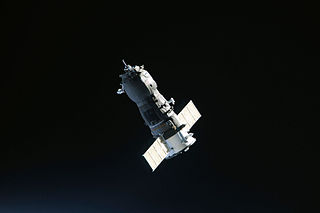
Uncrewed spacecraft or robotic spacecraft are spacecraft without people on board. Uncrewed spacecraft may have varying levels of autonomy from human input; they may be remote controlled, remote guided or autonomous: they have a pre-programmed list of operations, which they will execute unless otherwise instructed. A robotic spacecraft for scientific measurements is often called a space probe or space observatory.

Zond 5 was a spacecraft of the Soviet Zond program. In September 1968 it became the first spaceship to travel to and circle the Moon in a circumlunar trajectory, the first Moon mission to include animals, and the first to return safely to Earth. Zond 5 carried the first terrestrial organisms to the vicinity of the Moon, including two tortoises, fruit fly eggs, and plants. The Russian tortoises underwent biological changes during the flight, but it was concluded that the changes were primarily due to starvation and that they were little affected by space travel.

It! The Terror from Beyond Space is an independently made 1958 American science fiction horror film, produced by Robert Kent, directed by Edward L. Cahn, that stars Marshall Thompson, Shawn Smith, and Kim Spalding. The film was distributed by United Artists as a double feature with Curse of the Faceless Man.
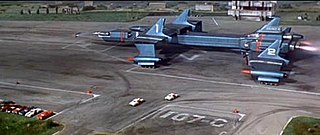
Zero-X is a fictional Earth spacecraft that first appeared in two of Gerry and Sylvia Anderson's Supermarionation productions, the 1966 film Thunderbirds Are Go and the 1967 television series Captain Scarlet and the Mysterons. Although publicity material for the various Supermarionation series, and the TV Century 21 comic, made references to connections between the Thunderbirds and Captain Scarlet canons, Zero-X is the only official link between the two series.
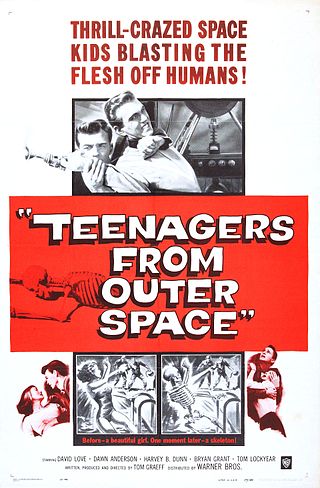
Teenagers from Outer Space is a 1959 American independent black-and-white science fiction cult film released by Warner Bros. The film was produced, written and directed by Tom Graeff and stars David Love, Dawn Bender, Bryan Grant, Harvey B. Dunn, Tom Graeff and King Moody. Teenagers from Outer Space was distributed theatrically by Warner Bros. on a double feature with Gigantis the Fire Monster, the English-dubbed version of the 1955 Japanese giant monster film Godzilla Raids Again.

Gamera vs. Guiron is a 1969 Japanese kaiju film directed by Noriaki Yuasa, written by Niisan Takahashi, and produced by Daiei Film. It is the fifth entry in the Gamera film series, following Gamera vs. Viras, which was released the previous year. Gamera vs. Guiron stars Nobuhiro Kajima, Miyuki Akiyama, Christopher Murphy, Yuko Hamada, and Eiji Funakoshi. The film was released theatrically in Japan on March 21, 1969. It did not receive a theatrical release in the United States, but was released directly to American television that year by American International Television under the title Attack of the Monsters. The film was followed by Gamera vs. Jiger the following year.
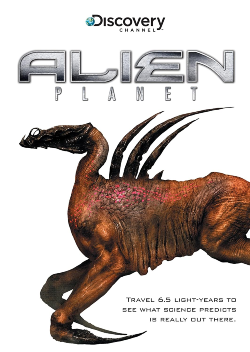
Alien Planet is a 2005 docufiction TV special created for the Discovery Channel. Based on the 1990 book Expedition by the artist and writer Wayne Barlowe, Alien Planet explores the imagined extraterrestrial life of the fictional planet Darwin IV in the style of a nature documentary. Although closely following Barlowe's depiction of Darwin IV, Alien Planet features a team of scientists and science fiction figures discussing Darwin IV as if it had actually been discovered. Among the people featured are Michio Kaku, Stephen Hawking, Jack Horner, James B. Garvin and George Lucas.

Doraemon: Nobita Drifts in the Universe is the 1999 Japanese animated epic space opera film. It is the second Doraemon film released after Hiroshi Fujimoto's departure, based on the 19 volume of the same name of the Doraemon Long Stories series. This is the third movie solely produced by Fujiko Production following The Record of Nobita's Parallel Visit to the West (1988) and Nobita's Great Adventure in the South Seas (1998). This movie commemorates the 20th anniversary of the Doraemon film series. It was released on March 6, 1999, together with Doraemon: Nobita's the Night Before a Wedding and Funny Candy of Okashinana!?. It is the 20th Doraemon film.

Space Odyssey: Voyage to the Planets, marketed as Voyage to the Planets and Beyond in the United States, is a 2004 two-part fictional documentary created by Impossible Pictures and produced by BBC Worldwide, Discovery Communications and ProSieben. Space Odyssey chronicles a fictional crewed voyage throughout the Solar System, which is used to convey scientific information on spaceflight and on the different planets. The programme was initially announced under the title Walking with Spacemen as an instalment in the Walking with... franchise of documentaries. Though the title was changed before release and its connection to the other Walking with... programmes was removed, it was broadcast under the original title in Canada. The special effects and scientific accuracy of Space Odyssey was praised by critics, though some criticism was leveled at the storylines and drama portions of the programme.
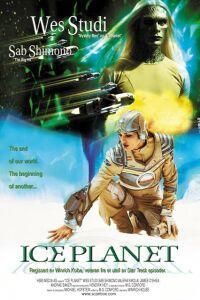
Ice Planet is a 2001 Canadian-German science fiction film produced as a pilot movie for an intended TV series. The film was directed by Winrich Kolbe and its cast included Wes Studi as Commander Trager.

"Dragon's Domain" is the eighth episode of the first series of Space: 1999. The screenplay was written by Christopher Penfold; the director was Charles Crichton. The final shooting script was dated 21 January 1975, with blue-page amendments dated 29 January 1975 and yellow-page amendments dated 30 January 1975. Live-action filming took place Monday 27 January 1975 through Monday 10 February 1975.
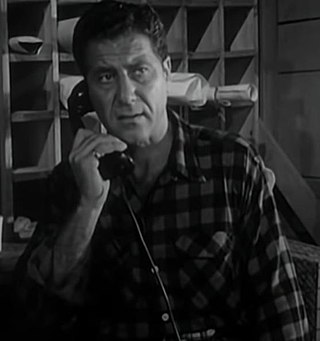
Baynes Barron was an American film and television actor.
References
- ↑ Hoop-Tober2018. "Review and Summary by Hoop-Tober2018" . Retrieved 2019-04-22.
{{cite web}}: CS1 maint: numeric names: authors list (link)